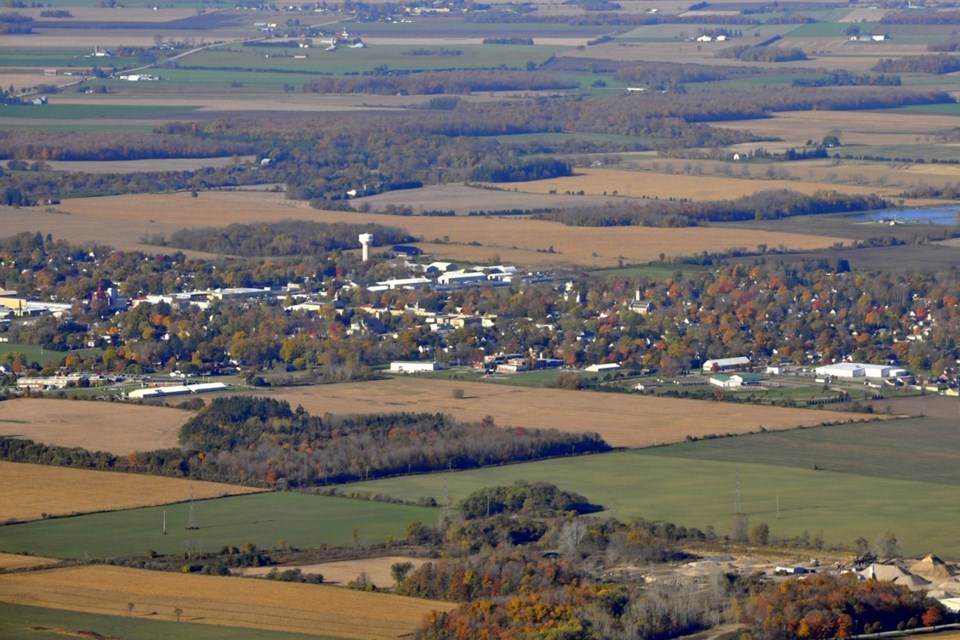The following guest commentary is by Tracey Arts, a director with Ontario Federation of Agriculture
Ontario’s agri-food sector often flies under the radar in the face of prominent industries like automotive, but it’s actually a major economic powerhouse in its own right.
In fact, the industry that spans from Ontario’s farms right through to food service contributes $47 billion to the provincial economy every year and provides jobs for about 10% of the province’s workforce – or more than 750,000 people.
Ontario's more than 48,000 farms are the backbone of the value chain, which includes businesses that supply inputs like seed and fertilizer, as well as manufacturing, transportation and warehousing, retail, food service, tourism and waste management.
Our family’s southwestern Ontario dairy farm is one of those farms and it’s always interesting to see the many other aspects of the provincial economy we touch, from the local farm supply store and veterinary clinic to transportation and processing all the way down to the people who eventually consume Ontario-made milk, cheese, yogurt and other dairy products.
The Ontario Ministry of Agriculture, Food and Rural Affairs (OMAFRA)’s Grow Ontario Strategy sets out ambitious goals for the growth of this sector between now and 2032, which will support economic growth and ensure an efficient and reliable food supply.
A strong component of making that happen is support and development of Ontario’s rural economy.
I’m also a director on the board of the Ontario Federation of Agriculture, and this past winter, I attended the Rural Ontario Municipal Association’s annual conference, where OMAFRA announced the development of the first Rural Economic Development Strategy for the province.
From diversification of existing businesses to the development of new enterprises, we hope it will seize the opportunity to unleash the untapped potential in rural Ontario not just for agriculture but also for the many businesses and services our communities rely on.
A strong rural economy matters to the entire provincial economy, and rural economic development should be a focus not just for OMAFRA but also many other ministries who have a role to play in our rural business and social fabric, from health, housing, and labour to economic development, transportation and more.
OFA has just submitted comments to the provincial consultation for the strategy, highlighting what we believe will help rural economic development be impactful and drive meaningful change.
Strong rural economies
Preserving farmland is a cornerstone of a provincial economic strategy that includes growth of the agri-food sector and its untapped economic potential. All levels of government should provide funding and other supports for local agri-food business diversification and encourage business-to-business networking.
While rural Ontario often faces challenges with lack of staff and funding capacity, restoring staff levels in OMAFRA’s Community Economic Development unit to full capacity and increasing the funding envelope for the Rural Economic Development Program will be integral to supporting important projects in rural areas.
Business development
OFA encourages the Ontario government to continue to fund innovation, diversification, and market development in the agri-food sector, and believes the province and its rural communities should be marketed as an agri-food cluster to attract new businesses to our communities. Business attraction should be done strategically using smart land use planning that targets investment-ready sites, so that farmland is preserved for agricultural uses as much as possible.
Targeted support for agritourism, ecotourism and culinary tourism businesses will help them expand and diversify their offerings. Funding for projects that support greater use of online platforms can expand market access for agri-food businesses to more Ontarians.
The growth of rural communities and businesses, however, requires infrastructure like affordable natural gas, high-speed broadband internet and well-maintained roads and bridges, as well as social infrastructure like schools, hospitals and community supports.
Workforce
The agri-food sector offers rewarding and fulfilling opportunities through many different career paths, including communications, science, health, technology and more. Strategies to attract workers with agri-food sector skill sets to rural areas are a key component of economic growth, and connecting prospective employees to agricultural and manufacturing employers is crucial to filling local labour gaps and ensuring a robust agri-food labour pool in rural Ontario.
Rural Ontario also needs a workforce with skills and talents that ensure services are available for rural residents, including medicine, education, technology, innovation and skilled trades. Complete communities with attainable housing, schools, education, childcare, quality job opportunities and a strong local food sector will ensure that rural Ontario can attract the best and brightest into their communities.



